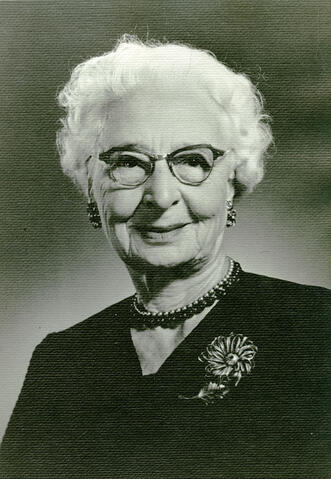
Área de título y declaración de responsabilidad
Título apropiado
Dr. Margaret Newton - Portrait
Tipo general de material
- Graphic material
Título paralelo
Otra información de título
Título declaración de responsabilidad
Título notas
Nivel de descripción
Item
Institución archivística
Código de referencia
Área de edición
Declaración de edición
Declaración de responsabilidad de edición
Área de detalles específicos de la clase de material
Mención de la escala (cartográfica)
Mención de proyección (cartográfica)
Mención de coordenadas (cartográfica)
Mención de la escala (arquitectónica)
Jurisdicción de emisión y denominación (filatélico)
Área de fechas de creación
Fecha(s)
-
1969 (Criação)
Área de descripción física
Descripción física
1 photograph : b&w ; 20 x 27.5 cm
Área de series editoriales
Título apropiado de las series del editor
Títulos paralelos de serie editorial
Otra información de título de las series editoriales
Declaración de responsabilidad relativa a las series editoriales
Numeración dentro de la serie editorial
Nota en las series editoriales
Área de descripción del archivo
Nombre del productor
Historial de custodia
Alcance y contenido
Head and shoulders image of Dr. Margaret Newton, honourary Doctor of Laws degree recipient; image likely near time of presentation.
Bio/Historical Note: Dr. Margaret Brown Newton (1887-1971) was a Canadian plant pathologist and mycologist who was internationally renowned for her pioneering research in stem rust Puccinia graminis, particularly for its effect on the staple Canadian agricultural product, wheat. Cereal grain farmers the world over owe a large debt of thanks to Dr. Newton. One of the first two women in Canada to study agriculture at university, she discovered the "presence of physiological races” in rust. This was the essential first step in conquering the rust that had destroyed over 100 million bushels of wheat in 1916. Working at the University of Saskatchewan and at the University of Minnesota, Dr. Newton received her PhD in 1922. None of these achievements were easy. As a woman she had to fight for the same access to the labs which male students had. By 1924 Dr. Newton was the leading Canadian authority on cereal rusts. In 1925 she became head of a team at an agriculture research centre in Manitoba. In 1930 Dr. Newton went to Russia to train 50 students on the problems of rust research. For three months she enjoyed the status of “Russian official” and was given the freedom of the city. On her return to Winnipeg she resumed her research. Unfortunately this work undermined Dr. Newton's health, forcing early retirement. Her important discoveries about wheat rust profoundly influenced the development of prairie agriculture. Dr. Newton was the first woman to receive the Flavelle Medal of the Royal Society of Canada. Further honours: a gold medal from McGill; election to fellowship in the Royal Society of Canada; and a gold medal by the University of Minnesota and her name inscribed in the University of Minnesota Hall of Fame. In 1969 she received an honourary Doctor of Laws degree from the U of S. Dr. Newton died in Victoria in 1971.
Área de notas
Condiciones físicas
Origen del ingreso
Arreglo
Idioma del material
Escritura del material
Ubicación de los originales
Disponibilidad de otros formatos
Restricciones de acceso
Condiciones de uso, reproducción, y publicación
Photographer: Unknown
Copyright holder: Unknown
Other terms: Responsibility regarding questions of copyright that may arise in the use of any images is assumed by the researcher.

